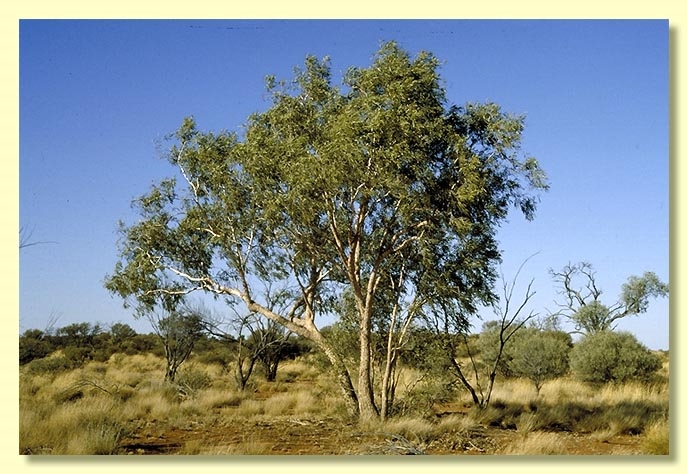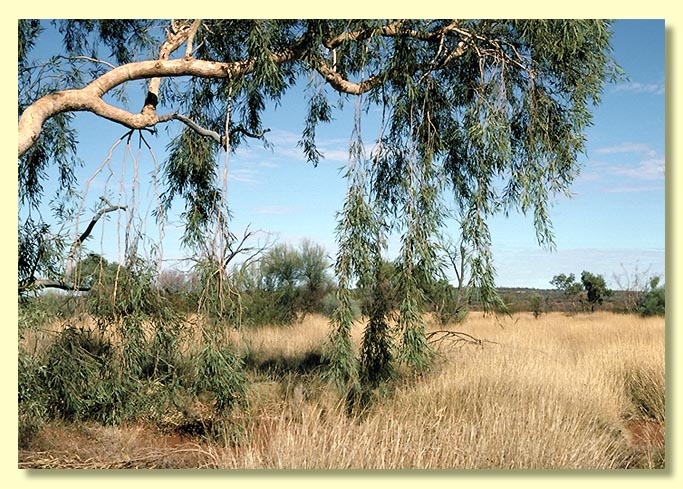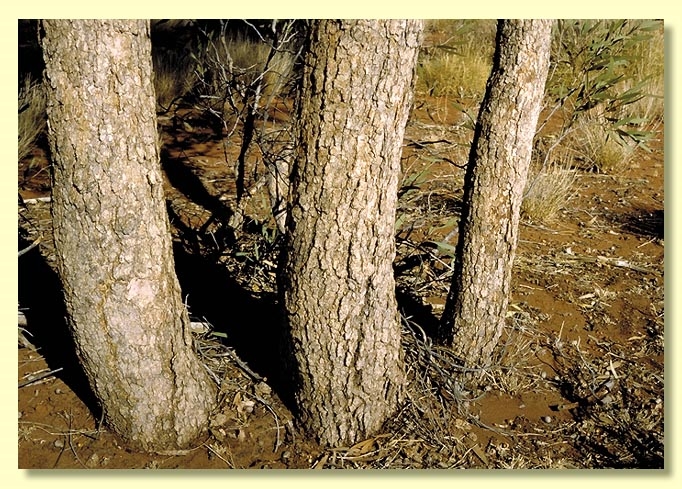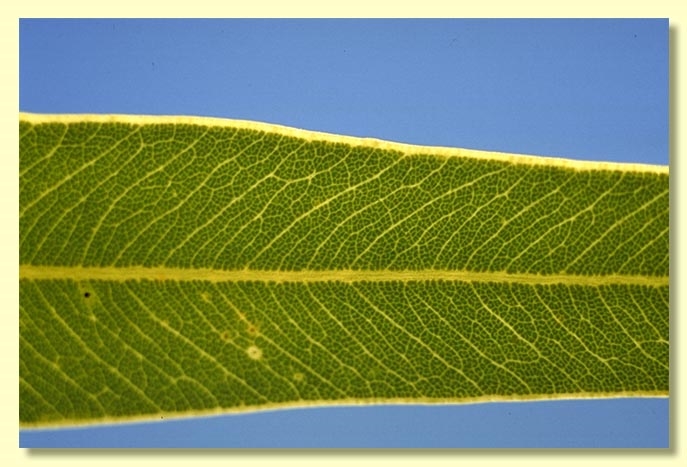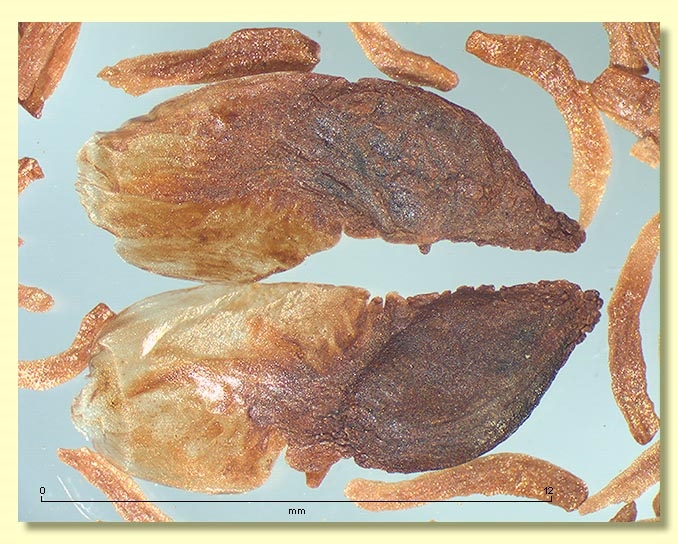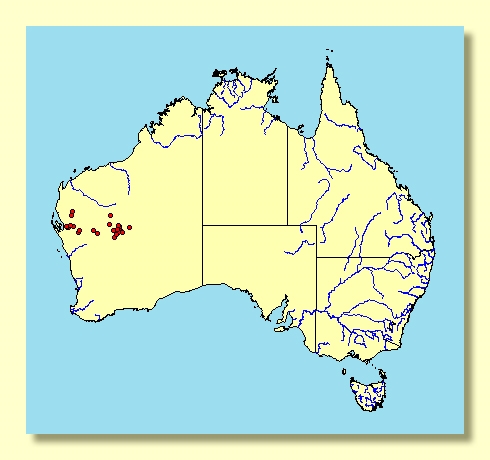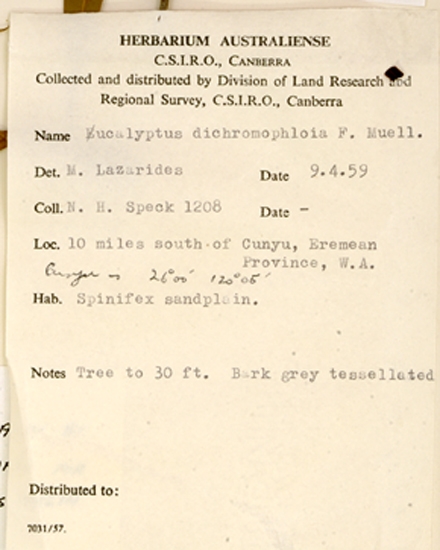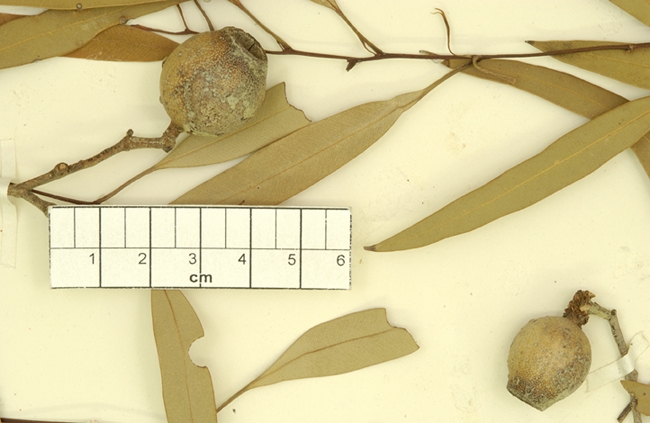Euclid - Online edition
Corymbia lenziana
Corymbia | Rufaria
Corymbia lenziana (D.J.Carr & S.G.M.Carr) K.D.Hill & L.A.S.Johnson, Telopea 6: 312 (1995).
Bark rough and tessellated to the small branches, pale grey-brown to brown to orange-brown.
Branchlets pendulous.
Juvenile growth (coppice or field seedlings to 50 cm): stems round in cross-section, smooth (losing scabridity very early in the field); juvenile leaves always shortly petiolate, opposite for a few nodes then alternate, narrowly lanceolate to linear, 4–10 cm long, 0.3–0.8 cm wide, base tapering to the petiole, green to yellowy green.
Adult leaves alternate, petioles 0.4–1.5 cm long; blade narrowly lanceolate to linear, 6.5–12 cm long, 0.5–1.5 cm wide, flat, concolorous, dull green, base tapering to the petiole, margin entire, apex acute, side-veins penniveined, reticulation very dense, intramarginal vein absent, oil glands obscure or absent.
Inflorescence terminal compound, peduncles 0.5–1.3 cm long, buds 7 per umbel, pedicels 0.2–0.7 cm long. Mature buds obovoid to pyriform, 0.6–0.8 cm long, 0.4–0.5 cm wide, surface smooth and glossy (not scurfy), scar absent (both opercula shed together at flowering), operculum rounded to patelliform, stamens inflexed, anthers oblong, versatile, dorsifixed, dehiscing by longitudinal slits, style long and straight, stigma papillate (mop-like), locules commonly 3–4(5), ovules not in regular rows. Flowers white.
Fruit pedicellate (pedicels 0.2–0.7 cm long), truncate-globose to slightly urceolate, 1.2–1.9 cm long, 1–1.7 cm wide, neck absent or scarcely developed, disc vertically descending, valves 3–4(5), deeply enclosed.
Seeds brown, 6–14 mm long, ellipsoidal with terminal wing, hilum ventral.
Cultivated seedlings (measured at node 10): cotyledons reniform; stems round in cross-section, smooth to slightly scabrid, leaves subsessile to very shortly petiolate, opposite to sub-opposite, lower leaves ovate to shortly lanceolate becoming narrowly lanceolate by node 6, 4–8 (10.3) cm long, 0.5–1.5 (1.8) cm wide, dull grey to grey-green, base of lower leaves truncate to rounded but soon tapering to the petiole as leaves narrow.
Flowering time unknown.
A small tree, often sprawling or tumbledown, of scattered occurrence in Western Australia from Woodleigh Station east of Shark Bay to east of Wiluna. The distribution of this species is poorly known, and it may occur further east into central Australia and far northern South Australia, although earlier records from these areas have proved to be mis-identifications. Corymbia lenziana has rough tessellated bark extending to the small limbs, or rarely with the limbs smooth-barked. The adult leaves are small, glossy, light green and lack intramarginal veins and visible oil glands.
The other bloodwoods in the area of occurrence of C. lenziana are C. chippendalei, which differs by the sand dune habitat, larger leaves, and larger, thick-rimmed fruit lacking a neck; C. terminalis, which differs by the larger leaves, scurfy buds and larger buds and fruit; and C. eremaea, which differs by having slightly wider adult leaves without the weeping habit of typical C. lenziana, fruit with a distinct neck and usually growing near the tops of rocky hills. In the Pilbara region of Western Australia, to the west of the range of C. lenziana, the common bloodwood is C. hamersleyana, which has buds slightly scurfy and fruit with a constriction below the rim (i.e. a neck), but otherwise are of similar size.
MORE ABOUT CORYMBIA
MORE ABOUT RED BLOODWOODS
Janette Lenz was a Research Assistant at the Research School of Biological Sciences, Australian National University, Canberra. She worked closely with the authors of this species, Professor Denis Carr and Maisie Carr and was acknowledged by them in Eucalyptus 1 for her invaluable assistance and for her practical, organisational and conceptual skills.

